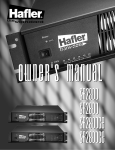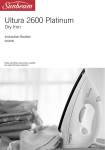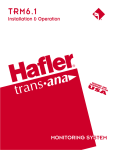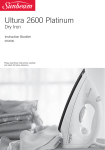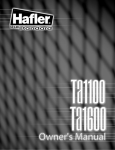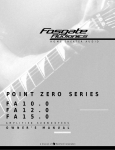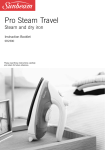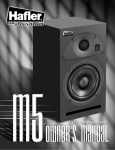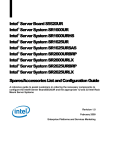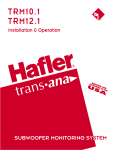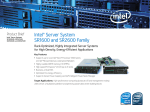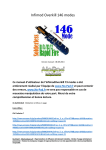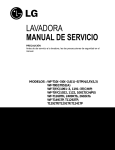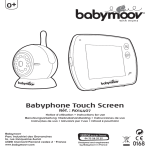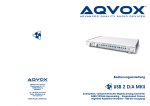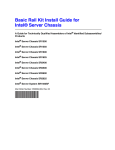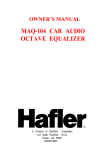Download Hafler SR2300 User's Manual
Transcript
Owner’s Manual SR2300 SR2600 Table of Contents DECLARATION OF CONFORMITY . . . . . . . . . . . . . . . . . . . . . . . . . . . . . . . . . . . . . . . . . . . . . . . . . . . . . . . . . . . . . . 2 SAFETY INFORMATION . . . . . . . . . . . . . . . . . . . . . . . . . . . . . . . . . . . . . . . . . . . . . . . . . . . . . . . . . . . . . . . . . . . . . . .3 SPECIFICATIONS . . . . . . . . . . . . . . . . . . . . . . . . . . . . . . . . . . . . . . . . . . . . . . . . . . . . . . . . . . . . . . . . . . . . . . . . . . . 8 INTRODUCTION . . . . . . . . . . . . . . . . . . . . . . . . . . . . . . . . . . . . . . . . . . . . . . . . . . . . . . . . . . . . . . . . . . . . . . . . . . . .9 TECHNICAL DESIGN FEATURES . . . . . . . . . . . . . . . . . . . . . . . . . . . . . . . . . . . . . . . . . . . . . . . . . . . . . . . . . . . . . . . . .9 Why a new amplifier topology? . . . . . . . . . . . . . . . . . . . . . . . . . . . . . . . . . . . . . . . . . . . . . . . . . . . . . . . . . . . . . . .9 What else distinguishes these amplifiers? . . . . . . . . . . . . . . . . . . . . . . . . . . . . . . . . . . . . . . . . . . . . . . . . . . . . . . .10 Universal Line Voltage Input . . . . . . . . . . . . . . . . . . . . . . . . . . . . . . . . . . . . . . . . . . . . . . . . . . . . . . . . . . . . . . . .10 Protection Circuits . . . . . . . . . . . . . . . . . . . . . . . . . . . . . . . . . . . . . . . . . . . . . . . . . . . . . . . . . . . . . . . . . . . . . . .10 DESIGN FEATURES . . . . . . . . . . . . . . . . . . . . . . . . . . . . . . . . . . . . . . . . . . . . . . . . . . . . . . . . . . . . . . . . . . . . . . . . . 11 INSTALLATION . . . . . . . . . . . . . . . . . . . . . . . . . . . . . . . . . . . . . . . . . . . . . . . . . . . . . . . . . . . . . . . . . . . . . . . . . . . . 12 Cooling . . . . . . . . . . . . . . . . . . . . . . . . . . . . . . . . . . . . . . . . . . . . . . . . . . . . . . . . . . . . . . . . . . . . . . . . . . . . . . . 12 Power/Thermal Requirements . . . . . . . . . . . . . . . . . . . . . . . . . . . . . . . . . . . . . . . . . . . . . . . . . . . . . . . . . . . . . . .12 Noise . . . . . . . . . . . . . . . . . . . . . . . . . . . . . . . . . . . . . . . . . . . . . . . . . . . . . . . . . . . . . . . . . . . . . . . . . . . . . . . . .12 AC Line . . . . . . . . . . . . . . . . . . . . . . . . . . . . . . . . . . . . . . . . . . . . . . . . . . . . . . . . . . . . . . . . . . . . . . . . . . . . . . .12 Audio Ground Chassis/Float Switch . . . . . . . . . . . . . . . . . . . . . . . . . . . . . . . . . . . . . . . . . . . . . . . . . . . . . . . . . . .13 Output . . . . . . . . . . . . . . . . . . . . . . . . . . . . . . . . . . . . . . . . . . . . . . . . . . . . . . . . . . . . . . . . . . . . . . . . . . . . . . . .13 Power Switch . . . . . . . . . . . . . . . . . . . . . . . . . . . . . . . . . . . . . . . . . . . . . . . . . . . . . . . . . . . . . . . . . . . . . . . . . . .13 OPERATION . . . . . . . . . . . . . . . . . . . . . . . . . . . . . . . . . . . . . . . . . . . . . . . . . . . . . . . . . . . . . . . . . . . . . . . . . . . . . .14 Input . . . . . . . . . . . . . . . . . . . . . . . . . . . . . . . . . . . . . . . . . . . . . . . . . . . . . . . . . . . . . . . . . . . . . . . . . . . . . . . . . 14 Daisy Chain Output . . . . . . . . . . . . . . . . . . . . . . . . . . . . . . . . . . . . . . . . . . . . . . . . . . . . . . . . . . . . . . . . . . . . . .14 Earth Grounded Equipment . . . . . . . . . . . . . . . . . . . . . . . . . . . . . . . . . . . . . . . . . . . . . . . . . . . . . . . . . . . . . . . . .14 Floated Equipment . . . . . . . . . . . . . . . . . . . . . . . . . . . . . . . . . . . . . . . . . . . . . . . . . . . . . . . . . . . . . . . . . . . . . . .15 Level Controls . . . . . . . . . . . . . . . . . . . . . . . . . . . . . . . . . . . . . . . . . . . . . . . . . . . . . . . . . . . . . . . . . . . . . . . . . .15 Biamp/Stereo Switch . . . . . . . . . . . . . . . . . . . . . . . . . . . . . . . . . . . . . . . . . . . . . . . . . . . . . . . . . . . . . . . . . . . . . .16 Stereo/Mono 70V 100V Switch . . . . . . . . . . . . . . . . . . . . . . . . . . . . . . . . . . . . . . . . . . . . . . . . . . . . . . . . . . . . . .16 Protect . . . . . . . . . . . . . . . . . . . . . . . . . . . . . . . . . . . . . . . . . . . . . . . . . . . . . . . . . . . . . . . . . . . . . . . . . . . . . . . .16 Load Switch . . . . . . . . . . . . . . . . . . . . . . . . . . . . . . . . . . . . . . . . . . . . . . . . . . . . . . . . . . . . . . . . . . . . . . . . . . . .16 Thermal . . . . . . . . . . . . . . . . . . . . . . . . . . . . . . . . . . . . . . . . . . . . . . . . . . . . . . . . . . . . . . . . . . . . . . . . . . . . . . .17 Clipping . . . . . . . . . . . . . . . . . . . . . . . . . . . . . . . . . . . . . . . . . . . . . . . . . . . . . . . . . . . . . . . . . . . . . . . . . . . . . . .17 Signal . . . . . . . . . . . . . . . . . . . . . . . . . . . . . . . . . . . . . . . . . . . . . . . . . . . . . . . . . . . . . . . . . . . . . . . . . . . . . . . . .17 WIRING DIAGRAMS . . . . . . . . . . . . . . . . . . . . . . . . . . . . . . . . . . . . . . . . . . . . . . . . . . . . . . . . . . . . . . . . . . . . . . . .18 Stereo Mode . . . . . . . . . . . . . . . . . . . . . . . . . . . . . . . . . . . . . . . . . . . . . . . . . . . . . . . . . . . . . . . . . . . . . . . . . . . 18 Biamp Mode . . . . . . . . . . . . . . . . . . . . . . . . . . . . . . . . . . . . . . . . . . . . . . . . . . . . . . . . . . . . . . . . . . . . . . . . . . .18 Bridge Mono Mode . . . . . . . . . . . . . . . . . . . . . . . . . . . . . . . . . . . . . . . . . . . . . . . . . . . . . . . . . . . . . . . . . . . . . . .19 70V Mono Mode . . . . . . . . . . . . . . . . . . . . . . . . . . . . . . . . . . . . . . . . . . . . . . . . . . . . . . . . . . . . . . . . . . . . . . . .19 100V Mono Mode . . . . . . . . . . . . . . . . . . . . . . . . . . . . . . . . . . . . . . . . . . . . . . . . . . . . . . . . . . . . . . . . . . . . . . .20 70V Stereo Mode . . . . . . . . . . . . . . . . . . . . . . . . . . . . . . . . . . . . . . . . . . . . . . . . . . . . . . . . . . . . . . . . . . . . . . . .20 SERVICE POLICY AND LIMITED WARRANTY . . . . . . . . . . . . . . . . . . . . . . . . . . . . . . . . . . . . . . . . . . . . . . . . . . . . . .21 PC BOARD LAYOUTS . . . . . . . . . . . . . . . . . . . . . . . . . . . . . . . . . . . . . . . . . . . . . . . . . . . . . . . . . . . . . . . . . . . . . . . .22 EMI Filter . . . . . . . . . . . . . . . . . . . . . . . . . . . . . . . . . . . . . . . . . . . . . . . . . . . . . . . . . . . . . . . . . . . . . . . . . . . . . 23 SCHEMATIC DIAGRAMS . . . . . . . . . . . . . . . . . . . . . . . . . . . . . . . . . . . . . . . . . . . . . . . . . . . . . . . . . . . . . . . . . . . . .24 EMI Filter . . . . . . . . . . . . . . . . . . . . . . . . . . . . . . . . . . . . . . . . . . . . . . . . . . . . . . . . . . . . . . . . . . . . . . . . . . . . . 24 Bridge Rectifier . . . . . . . . . . . . . . . . . . . . . . . . . . . . . . . . . . . . . . . . . . . . . . . . . . . . . . . . . . . . . . . . . . . . . . . . . 25 Amplifier . . . . . . . . . . . . . . . . . . . . . . . . . . . . . . . . . . . . . . . . . . . . . . . . . . . . . . . . . . . . . . . . . . . . . . . . . . . . . . 26 Protection . . . . . . . . . . . . . . . . . . . . . . . . . . . . . . . . . . . . . . . . . . . . . . . . . . . . . . . . . . . . . . . . . . . . . . . . . . . . . 28 High Voltage Control . . . . . . . . . . . . . . . . . . . . . . . . . . . . . . . . . . . . . . . . . . . . . . . . . . . . . . . . . . . . . . . . . . . . . 30 Housekeeping Control . . . . . . . . . . . . . . . . . . . . . . . . . . . . . . . . . . . . . . . . . . . . . . . . . . . . . . . . . . . . . . . . . . . . 32 Input . . . . . . . . . . . . . . . . . . . . . . . . . . . . . . . . . . . . . . . . . . . . . . . . . . . . . . . . . . . . . . . . . . . . . . . . . . . . . . . . . 34 Power . . . . . . . . . . . . . . . . . . . . . . . . . . . . . . . . . . . . . . . . . . . . . . . . . . . . . . . . . . . . . . . . . . . . . . . . . . . . . . . . 36 –1 – Declaration of Conformity Application of Council Directive: 73/23/EEC (low voltage directive) Application of Council Directive: 89/336/EEC (EMC Directive) Standard(s) to which Conformity is Declared: EN55103-1 (Emissions) EN55103-2 (Immunity) EN60065 (Safety) Manufacturer’s Name: Hafler Manufacturer’s Address: 546 South Rockford Drive, Tempe, Arizona 85281 Importer’s Name: Importer’s Address: Type of Equipment: 2-channel Audio Power Amplifier Model No.: SR2300CE SR2600CE Serial Number: Year of Manufacturing: 2000 2001 2002 2003 2004 I, the undersigned, hereby declare that the equipment specified above conforms to the above Directive(s) and Standard(s) Place: Hafler Date: 2/1/2000 James C. Strickland, VP Engineering –2 – NOTICE - IMPORTANT SAFETY INFORMATION The lightning flash with arrowhead symbol within an equilateral triangle is intended to alert the user to the presence of uninsulated "dangerous voltage" within the product's CAUTION RISK OF ELECTRIC SHOCK DO NOT OPEN ! WARNING: enclosure, that may be of sufficient magnitude to constitute a risk of electric shock to persons. The exclamation point within an equilateral triangle is intended to alert the user of the presence of important operating and maintenance (servicing) instructions in the literature accompanying the appliance. TO PREVENT FIRE OR SHOCK HAZARD DO NOT EXPOSE THIS EQUIPMENT TO RAIN OR MOISTURE. 1. READ INSTRUCTIONS All the safety and operating instructions of your Hafler equipment should be read before power is applied to the equipment. 2. RETAIN OWNER'S MANUAL These safety and operating instructions should be retained for future reference. 3. HEED WARNINGS All warnings on the equipment and in the operating instructions are important and should be followed. 4. FOLLOW INSTRUCTIONS All operating and use instructions are important and should be followed. 5. HEAT The lightning flash with arrowhead symbol adjacent to a terminal is intended to alert the user that the terminal is hazardous live. provide the same three wire grounded connection. It is important that the blades of the equipment plug be able to fully insert into the mating receptacle. Never remove the round grounding pin on the plug in an attempt to mate to a two wire ungrounded receptacle: use a grounding adapter with the grounding tab or wire suitably connected to earth ground. 11. NON-USE PERIODS During periods of extended non-use, the power cord should be unplugged from the power source. 12. CLEANING The equipment should be cleaned only as detailed in the operating instructions. 13. OBJECT AND LIQUID ENTRY The equipment should be kept away from areas of high temperature, i.e., heater vents, radiators, stoves/ovens, fireplaces, etc. Care should be taken so that objects and/or liquids, such as cleaning fluids or beverages, are not spilled into the enclosure of the equipment. 6. VENTILATION 14. DAMAGE REQUIRING SERVICE The equipment should be used in an area suitable for proper ventilation. Care should be taken not to impede airflow in and around the cabinet. Hafler equipment should be serviced by qualified service personnel when: A. The power supply cord or plug has been damaged, or B. Objects have fallen onto, or liquid has been spilled into the equipment, or C. The equipment has been exposed to rain, or D. The equipment does not appear to operate normally or exhibits a marked change in performance, or E. The equipment has been dropped, or the enclosure has been damaged. 7. WATER AND MOISTURE The equipment should not be used in or around water, such as a bathtub, sink, or swimming area. Also, the equipment should not be used in areas prone to flooding, such as a basement. 8. POWER SOURCES The equipment should be connected only to a power source of the same voltage and frequency as that listed on the rear panel above the power cord entry point. 9. POWER CORD PROTECTION Power cords should be arranged so they do not interfere with the movement of objects in the room: people, fan blades, utility carts, etc. Also, care should be taken that the cord is not pinched or cut, and placed so it is not in danger of being pinched or cut, as in under a rug, around a tight corner, etc. 10. POWER CORD GROUNDING The power supply cord is of a three wire grounded type, designed to reduce the risk of electric shock sustained from a live cabinet. It is assumed to be of suitable length for most uses of the equipment. The use of extension cords and power strips is discouraged unless they are of suitable rating to deliver the required total current for safe operation of all connected equipment. Furthermore, extension cords or power strips must 15. SERVICING The user should not attempt to service the equipment beyond that which is described in the operating instructions. All other service should be referred to qualified service personnel. 16. CARTS AND STANDS The equipment should be used with carts or stands only of sufficient strength and stability for the use intended. An equipment and cart combination should be moved with care. Quick stops and starts, excessive force, and uneven surfaces may cause the equipment and cart combination to topple. –3 – ADVERTENCIA – INFORMACION DE SEGURIDAD IMPORTANTE El símbolo de flecha relámpago dentro de un triángulo equilátero, es para alertar al usario de la presencia de “voltajes peligrosos” no aislados en el interior del aparato, PELIGRO RIESGO DE DESCARGA ´ ´ ELECTRICA NO ABRIR. los cuales pueden ser de suficiente magnitud para constituir un riesgo de choque ! eléctrico a las personas. El símbolo de exclamación dentro de un triángulo equilátero, es para alertar al usuario de la presencia de instrucciones importantes de operación y mantenimiento (servicio) en la documentación que acompaña al equipo. El símbolo del relámpago con la punta de flecha que está situado junto a la terminal es para alertar al usuario que la terminal presenta un peligro cuando está activa. ´ PRECAUCIONS: Para Prevenir el incendio o la descarga electrica, no exponer este equipo a la lluvia o a la humedad 1. LEA LAS INSTRUCCIONES un chasis energizado. Se asume que su longitud es suficiente para la mayoría de usos del equipo. El uso de extensiones y multienchufes no es recomendado, a menos que tengan el amperaje adecuado para poder suministrar la corrioente requerida pra la operación segura de todo el equipo conectado. Aun más, las extensiones deben proveer de la misma conección aterrada de tres hiles. Es importante que el enchufe se pueda introducir completamente en el receptáculo. Nunca remeva el pin de aterramiento en un intento por conectar el cable en un receptáculo de dos hilos no aterrado: use un adaptador de aterramiento que esté adecuadamente conectado a un punto de tierra. Todas las instrucciones de seguidad y operación de su equipo Hafler, deben ser leídas antes de que el equipo sea conectado dléctricamente. 2. CONSERVE EL MANUAL DEL PROPIETARIO Estas instrucciones de seguridad y operación, deben ser conservadas para futuras referencias. 3. CUADROS DE ADVERTENCIAS Todas las advertencias en el equipo y en las instrucciones de operación, son importantes y deben ser seguidas. 4. SIGA LAS INSTRUCCIONES 11. PERIODOS SIN USO Todas las instrucciones de uso y operación son importantes y deben ser seguidas. Durante períodos prolongados sin uso del equipo, el cable de corriente debe ser desconectado de la fuente de electrixidad. 5. CALOR 12. LIMPIEZA El equipo debe ser mantenido lejos de areas de alta temperatura, como por ejemplo: ventilaciones de calentadores, radiadores, estufas/hornos, hogueras, etc. El equip debe ser limpiado solo en la forma que se detalla en las instrucciones de operación. 13. INTRODUCCIÓN DE OBJETOS Y LIQUIDO 6. VENTILACION Deben ser tornadas precauciones con el fin de que objetos y/ó líquidos, tales como fluidos de limpieza y gaseosas, no sean derramados dentro del chassis del aparato. El equip debe ser usado en áreas con ventilación adecuada. Deben er tornadas las precauciones necesarias para no impedir el flujo de aire dentro y alrededor del aparato. 14. DAÑOS QUE REQUIEREN DE SERVICIO 7. AGUA Y HUMEDAD Los equipos Hafler deben ser llevados a servicio por personal calificado cuando: A. El cable de corriente ó el enchufe haya sido dañado, ó B. Objetos ó líquido hayan sido introducidos ó derramado en el equipo, ó C. El equipo haya sido expuesto a lluvia, ó D. El equipo aparenta no operar normalmente ó exhibe un marcado cambio en su desempeño, ó E. El equipo se ha caído, o el chassis ha sido golpeado. El equipo no debe ser usado en el agua ó alrededor de ésta, tales como en una bañera, tanque o áreas de nado. También, el equipo no debe ser usado en áreas propensas a inundaciones, tales como en un sótano. 8. FUENTES DE PODER El equipo debe ser conectado a una fuente de poder del mismo voltaje y frecuencia que el indicado en el panel trasero sobre el punto de entrada del cable de corriente. 15. SERVICIO 9. PROTECCION DEL CABLE DE CORRIENTE El usuario no deberá intentar darle servicio al equipo más allá de lo que está descrito en el instructivo de operación. Todo lo demás, deberá ser referido a servicio por personal calificado. Los cables de corriente deben ser dispuestos de forma tal que no interfieran con el movimiento de objetos en la sala: personas, aspas de ventilación, carretillas, etc. También, es necesario tener cuidado de que el cable no esté punzado o cortado, y debe estar ubicado de forma tal que esto no ocurra, como podría suceder debajo de una alfombra o al pasar el cable por una esquina aguda, etc. 16. CARRETILLAS Y SOPORTES El equipo podrá ser usado con carretillas y soportes que tengan la fortaleza y estabilidad suficiente para el uso previsto. 10. ATERRAMIENTO DEL CABLE DE CORRIENTE El cable de corriente es del tipo aterrado de tres hilos, diseñado para reducir el riesgo de una descarga eléctrica procendent de La combinación equipo/carretilla deberá ser movida con cuidado. Rápidas paradas y arranques, excesiva fuerza y superficies imparejas, pueden causar el volcamiento del conjunto de carretilla/equipo. –4 – ACHTUNG – WICHTIGE SICHERHEITS – INFORMATIONEN Der Blitz mit dem Pfeil, in einem gleihschenkligen Dreieck, soll den benutzer vor ACHTUNG GEFAHR EINES ELEKTRISCHEN SCHLAGS ¨ NICHT OFFNEN ! unisolierter “gefährlicher Spannung” innerhalb des Gerätes warnen. Das Ausrufezeichen, in einem gleichschenkligen Dreieck, soll den Benutzer darauf aufmerksam machen, dab dem Gerät wichtige Operations - und Service Informationen beigefügt sind. Der aufleuchtende Blitz mit dem Pfeilsymbol neben einem Terminal dient dazu, den Benutzer darauf aufmerksam zu machen, dass der Terminal angestellt gefährlich ist. WARNUNG: Um die gefahr eines elektroschocks oder feuer zu ¨ keinem regen oder vermeiden, setzen sie das gerat extremer feuchtigkeitaus. 1. INSTRUKTIONEN LESEN Alle Sicherheits- und Operationshinweise Ihres Hafler Equipments sollten vor der Inbetriebnahme gelesen werden. benutzen, achten Sie darauf, das dies die erforderlichen Ströme bertragen können. Benutzen Sie immer dreiadrige Verlängerungskable. 2. BETRIEBSANLEITUNG AUFBEWAHREN 11. ZEITRÄUME IN DENE DAS GERÄT NICHT GENUTZT WIRD Bewahren Sie die Bedienungsanleitung sorgfältig auf, damit Sie in dieser auch in Zukunft nachschlagen können. Wird das Gerät über einen längeren Zeitraum nicht genutzt (z.B. Urlaub), ziehen Sie bitten den Netzstecker aus der Steckdose. 3. WARNUNGEN BEACHTEN Alle Warnungen des Gerätes und der Bedienungsanleitung sind extrem wichtig und müssen befolgt werden. 4. INSTRUKTIONEN BEACHTEN Alle Operations- und Gebrauchshinweise sind extrem wichtig und müssen beachtet werden. 5. HITZE Das Equipment sollte fern von Hitze ausstrahlenden Geräten aufgestellt werden, wie z.B. Heizungen, Öfen etc. 6. VENTILATION Das Equipment sollte so aufgestellt werden, dab eine ausreichende Ventialition gewährt wird. 7. WASSER UND FEUCHTIGKEIT Das Equipment sollte nicht im oder in der Nähe von Wasser benutzt werden, wie z.B. in Schwimmbädem, Saunen etc. Es sollte ebenfalls nicht in Überschwämmungsgefährdeten Gebieten aufgestellt werden, wie z.B. Kellerräumen. 8. STROMANSCHLUb Das Equipment darf nur an eine Stromversorgung angeschlossen werden, die die gleichen Parameter aufweist, welche auf der Rückseite, über em Anschlubterminal des Gerätes, aufgelistet sind. 9. SCHUTZ DER ZULEITUNG Die Zuletungen sollten so verlegt werden, dab diese nicht in den Bewegungsbereich anderer Möbelstücke oder Personen hereinragen. Achten Sie darauf, das das Kabel nicht gequestscht oder durchschnittren wird, wie z.B. unter Schränken oder an scharfen Kanten etc. 12. REINIGEN Reinigen Sie das Gerät nur, wie in der Bedienungsanleitung detailliert beschrieben. 13. EINDRINGEN VON FREMDKÖRPERN Achten Sie darauf, dab weder Fremdkörper, noch Flüssigkeiten in das Gerät eindringen. 14. ERFORDERLICHER REPARATURSERVICE Hafler Equipment sollte nur von qualifizierten ServiceTechnikern instand gesetzt werden, wenn: A. Das Stromversorgungskabel beschädigt wurde B. Eine Flüssigkeit in das Gerät eingedrimgem ist C. Das Gerät Regen ausgesetzt wurde D. Das Gerät nicht mehr ordnungsgemäb funktioniert, ggf. nicht mehr die volle Leistung abgibt E. Das Gerät runtergefallen ist oder das Gehäuse beschädigt wurde 15. SERVICE Der Benutzer sollte nur den Service ausführen, der in der Bedienungsanleitung für den Benutzer freigegeben wird. Den weiterführenden Service sollte nur von qualifizierten Tevhnikern durchgeführt werden. 16. AUFSTELLUNG Das Equipment sollte so aufgestellt werden, dab der gewählte Untergrund die erforderliche Stabilität aufweist, so dab eine gefahrlose Bnutzong gewährleistet wird. Das Equipment und der Untergrund sollte mit äuberster Vorsicht bewegt werden. Bei schnellen Bewegungen oder starkem Abbremsen, kann es zum Umkippen des Equipments kommen. 10. MASSEANSCHLUb Das dreiadrige Anschlubkabel ist mit einem Erdungsleiter ausgestattet, welcher die Risiken eines Elektroschocks verringert. Das Kabel hat eine Länge, welche für die meisten Anwendungen völlig ausreicht. Wenn Sie Verlängerungskabel –5 – ATTENTION: INFORMATIONS IMPORTANTES DE SÉCURITÉ La lumière clignotante du symbole de la flêche à l'intérieur d'un triangle équilatéral, à pour objet d'alerter l'utilisateur de la présence “d'un voltage dangereux” non-isolé à ATTENTION RISQUE DE CHOC ´ ELECTRIQUE NE PAS OUVRIR ! AVERTISSEMENT: ´ Afin de prevenir les risques de feu ou de choc, ne pas ´ la pluie ou ´a l'humidité exposer cet appareil a 1. LIRE LES INSTRUCTIONS l'intérieur du produit, qui pourrait être de magnitude suffisante au risque d'éléctrocution. Le point d'exclamation, à l'intériur d'un triangle équilatéral, à pour objet de prévenir l'utilisateur de l'importance des instructions de fonctionement et de maintenance, jointes à l'appareil. Le symbol composé d’une flèche en forme d’éclair adjacent au terminal vise à alerter l’utilisateur que le terminal présente un danger lorsqu’il est sous tension. Le mode d'emploi et les mesures de sécurité de votre équipement Hafler devraient être consultés avant sa mise en marche. sations de ce matériel. L'utilisation de rallonge t d'adaptateur est déconsellée à moins dêtre en mesure de fournir la charge électrique requise à un fonctionement sans risque, de tout matériel relié. 2. CONSERVER LE GUIDE DE L'UTILISATEUR 11. PÉRIODES DE NON-UTILISATON Le mode e'emploi et les mesures de sécurité devraient être conservés pour des références futures. Durant les périodes de non-utilisation, la prise de courant ne devrait pas être branchée à une source d'energie. 3. CONSIDÉRATIONS DE MISE EN GARDE 12. NETTOYAGE Le mode d'emploi et les mises en garde concernant cet équipement sont de grande importance et devraient être suivis. Le matériel devrait être nettoyé en respectant les instructions indiquées. 4. SUIVRE LE MODE E'EMPLOI 13. PENETRATION DES LIQUIDES Le mode d'emploi et les conseils d'utilisation sont importants et devraient être suivis. Un attention particulière est éxigée quant à la dispersion de liquides tels que les produits de nettoyage et boissons, de façcon à éviter toute pénetration dans l'enceinte du matériel. 5. CHALEUR Le matériel devrait être préservé loin de toute source de chaleur: radiateurs, cuisinière/fours, cheminées,…etc. 6. VENTILATION Le matériel devrait être utilisé dans un endroit à bonne ventilation. Il reste nécessaire de respecter la circulation de flux d'air à l'intérier et autour du meuble. 7. EAU ET HUMIDITÉ Le matériel ne devrait pas être utilisé près d'une source d'eau, telle qu'une baignoire, un évier, ou une aire de baignade. De plus, le matériel ne devrait pas être utilisé dans des lieux sujets aux innondations, tels que les sous-sols. 8. SOURCES D'ÉNERGIE Le matériel devrait seulement être relié à une source d'énergie de même voltage et fréquence que celle indiquée sur le tableau arrière, au dessus de la fiche d'entrée de la prise de courant. 9. PROTECTION DE LA PRISE DE COURANT La prise de courant devrait être arrangée de façon à ne pas interférer avec le déplacement d'objets (chariots, pales de ventillateurs…etc.) ou de personnes à l'intérieur de la pièce. D'autre part, il faudrait faire tres attention à ce que la prise ne soit pas percée ou coupée, ou disposée de façon à risquer de l'être, comme sous un tapis, autour d'un angle pointu…etc. 14. DÉGÂT NÉCESSITANT UNE RÉVISION Le matériel Hafler devrait être révisé par des personnes qualifées de service après-vente, lorsque: A. Les fiches ou la prise de courant ont été endommagé, ou: B. De objets sont tombés sur le matériel, ou des liquides s'y sont dispersés, ou: C. Le matériel a été exposé à la pluie, ou: D. Le matériel ne semble pas fonctioner correctement, ou affiche un changement de performance, ou: E. Le matériel a été renversé à terre, ou l'enceinte a été endommagée. 15. REVISION L'utilisateur ne devrait pas essayer de réviser le matériel en allant plus loin que ce qui a été décrit dans le mode d'emploi. Toute autre réviion devrait être confiée à un personnel qualifié. 16. CHARRIOTS ET MEUBLES Le matériel devriat être utilisé avec des charriots et meubles de qualité et stabilité suffisante à son utilisation préconçue. L'ensemble du matériel et du charriot devrait être déplacé avec précaution. Des mises en marche et arrêts brusques, des collisions excessives ainsi que des surfaces inégales peuvent renverser l'ensemble du matériel et du charriot. 10. PRISE DE COURANT ÀTROIS FICHES La prise de courant est composée de trois fiches, désignées à réduire le risque de décharge électrique de l'appareil. Elle devrait être de longueur suffisante pour la plupart des utili- –6 – NOTARE – IMPORTANTI INFORMAZIONI SULLA SICUREZZA Il simbolo del fulmine in un triangolo equilatero vuole avvertire della presenza di tensioni elevate non isolate e di valore sufficiente per costituire rischio di shock elettrico ATTENZIONE ATTENZIONE: RISCHIO DE SCARICHE ELETTRICHE NON APRIRE alle persone. ! Il punto esclamativo contentuto in un triangolo equilatero vuole avvertire l'utente della presenza di parti di servizio e di manutenzione che sono dettagliate nel manuale di istruzioni. Il simbolo del lampo con testa a freccia posto accanto al terminale avverte l'utente che sul terminale è presente una tensione pericolosa. ATTENZIONE: Per prevenire incendio scariche elettriche, non esporre questo apparato a pioggia o umiditá. 1. LEGGETE LE ISTRUZIONI Tutte le istruzioni riguardanti la sicurezza ed il funzionamento devono essere lette prima di applicare tensione all'apparato. degli apparati connessi. E altersì importante che vengano sempre impiegate prolunghe con la configurazaione a tre fili con terra. 2. CONSERVATE IL MANUALE 11. PERIODI DI NON UTILIZZO Queste istruzioni riguardanti la sicurezza ed il funzionamento devono essere conservate come riferimento futuro. Durante lunghi periodi di non utilizzo, staccare il cavo di alimentazione. 3. AVVERTENZE 12. PULIZIA Tutte le avvertenze poste sull'apparato e sul libretto di istruzioni sono importanti e devono essere seguite. L'apparato deve essere pulito solo come indicato dalle istruzioni. 4. SEGUIRE LE ISTRUZIONI 13. INGRESSO DI OGGETTI E LIQUIDI Tuttle le istruzioni operative e di funzionamento devono essere seguite. Si deve prestar attenzione che oggetti e liquidi, come fluidi detergenti e bibite, non vengano versati all'interno dell'apparato. 5. TEMPERATURA 14. RIPARAZIONI L'apparato deve essere mantenuto lontano da tuttle le zone ad alta temperature, termosifoni, termoconvettori, stufe e forni, caminetti ed altro. Gli apparati Hafler devono essere riparati da personale qualificato quando: A. Il cavo di alimentazione o la spina sono danneggiati B. Oggetti sono caduti all'interno del telaio o quando del liquido è entrato C. Quando l'apparato è stato esposto a pioggia D. Quando l'apparato non sempra funzionare normalmente o quando esibisce un cambiamento di prestazioni o E. Quando è caduto o il telaio è stato danneggiato 6. VENTILAZIONE L'apparato deve essere posizionato in aree convenienti per una corretta ventilazione. Prestare attenzione che sia consentita circolazione d'aria attorno e dentro il cabinet. 7. ACQUA E POLVERE 15. ASSISTENZA L'apparato deve essere posizionato lontano da zone contenenti acqua, come vasche a bagno, acquari e piscine. Inoltre non deve essere impiegato in aree soggette ad allagamento, come le cantine. L'utente non deve tentare di prestare assistenza all'apparato, se non per quanto esposto nelle istruzioni. Tutti gli altri interventi devono essere effettuati da un tecnico specializzato. 16. CARRELLI E STAND 8. REQUISITI DI ALIMENTAZIONE L'apparato deve essere impiegato su carrelli o stand solo se questi sono sufficientemente solidi e stabili per la funzione a cui si vuole dedicarli. L'apparato deve essere connesso solo ad un'alimentazione della stessa tensione e frequenza di quanto scritto sulla parte posteriore del telaio. La combinazione di carrello ed apparato deve essere mossa con cautela. Fermate e partenze improvvise, forze eccessiva e superfici irregolari, possono ribaltare la cominzione carrello e apparato. 9. PROTEZIONE DEL CAVO DI ALIMENTAZIONE Il cavo di alimentazione deve essere posizionato in modo di non interferire con il movimento di oggetti nella stanza: persone, ventilatori, carrelli, ecc…prestate attenzione anche che il cavo non sia tagliato o spellato e che non possa tagliarsi e spellarsi. 10. MESSA A TERRA Il cavo di alimentazione è del tipo a tre fili con terra ed è progettato pr ridurre il rischio di shock elettrici. Si presume che sia della lunghezza sufficiente per la maggior parte degli impieghi. L'impiego di prolunghe e adattatori è sconsigliato se questi non garantiscono la potenza sufficiente per i corretto fuinzionamento –7 – Specifications All measurements taken at Normal Operating Conditions (i.e. 1/8th rated output power) unless noted otherwise. SR2300 POWER RATING: 8Ω 20-20kHz 4Ω 20-20kHz 2Ω 20-20kHz 70V 20-20kHz 100V 20-20kHz Bridged 8Ω 20-20kHz Bridged 4Ω 20-20kHz @ @ @ @ @ @ @ 0.1% 0.2% 0.3% 0.2% 0.2% 0.2% 0.3% THD THD THD THD THD THD THD FREQUENCY RESPONSE: 300W 300W 300W 600W 600W 600W 600W x x x x x x x 2 2 2 1 1 1 1 CH CH CH CH CH CH CH 10Hz-20kHz +/–0.1dB 0.2Hz-100kHz +/–3dB SR2600 600W 600W 600W 1200W 1200W 1200W 1200W x x x x x x x 2 2 2 1 1 1 1 CH CH CH CH CH CH CH 10Hz-20kHz +/–0.1dB 0.2Hz-100kHz +/–3dB INPUT SENSITIVITY: 8Ω 4Ω 2Ω 0.9V 0.6V 0.45V 1.3V 0.9V 0.6V MAX. INPUT: 3.0V 3.0V >100dB “A” WGT >100dB “A” WGT >75dB at 1kHz >75dB at 1kHz INPUT IMPEDANCE: 47kΩ per phase balanced 47kΩ per phase balanced DAMPING FACTOR: >500 >500 55W 860mA @ 115VAC 430mA @ 230VAC 190 BTU/hr 70W 1.0A @ 115VAC 500mA @ 230VAC 240 BTU/hr 280W 3.5A @ 115VAC 1.7A @ 230VAC 680 BTU/hr 490W 5.8A @ 115VAC 2.9A @ 230VAC 1160 BTU/hr 550W 6.6A @ 115VAC 3.3A @ 230VAC 1200 BTU/hr 1000W 12A @ 115VAC 5.9A @ 230VAC 2080 BTU/hr FUSE: "U" version (115VAC nominal) "CE" version (230VAC nominal) 7A, 3AG Slo-Blo, 1 ea. T5A, 5 x 20mm, 1 ea. 15A, 3AG Slo-Blo, 1 ea. T6.3A, 5 x 20mm, 1 ea. MAINS POWER VOLTAGE: "U" version "CE" version 100-140VAC, 50-60Hz 200-265VAC, 50-60Hz 100-140VAC, 50-60Hz 200-265VAC, 50-60Hz SIGNAL-TO-NOISE: CMMR: POWER/THERMAL REQUIREMENTS: Idle Condition* “U” version “CE” version Thermal Dissipation Normal Operating Condition “U” version “CE” version Thermal Dissipation (1/8 rated power, pink noise) Worst Case (1/3 rated power, pink noise) “U” version “CE” version Thermal Dissipation *both channels driven at rated power –8 – Specifications (cont) 18.5" Load Power 100V 70V 8Ω 4Ω 2Ω 3.5" 100V 70V 8Ω 4Ω 2Ω 19" DIMENSIONS: WEIGHT: (2U) 3.5H" x 19"W x 18.5"D (rack handles add 1.25"D) (2U) 3.5H" x 19"W x 18.5"D (rack handles add 1.25"D) 32lbs. (14.51 kg) 32lbs. (14.51 kg) Introduction The Hafler SR2300 and SR2600 amplifiers are two rack height, two channel, fan-cooled professional power amplifiers suitable for use in the most demanding sound reinforcement and commercial sound installations. These amplifiers offer outstanding efficiency by means of three technologies: high-efficiency TRANS•nova Class-G circuitry, high-frequency switching power supplies, and constant power output/load impedance selection switches. Technical Design Features WHY A NEW AMPLIFIER TOPOLOGY? Hafler TRANS•nova amplifiers, the recording studio reference, have a floating +/- power supply for each channel and a novel drive system covered by U.S. Patents 4,467,288 and 5,567,000. Our challenge was to convert this topology into a high efficiency design with minimal increase in complexity-yielding an amplifier of outstanding audio qualities, high efficiency and unprecedented value. TRANS•nova Class-G is that answer. The most common high-efficiency (Class-H) methods raise the rail voltages going to the output devices for higher power levels. TRANS•nova Class G does not do this. Instead, it operates by forming a triplet or triplex of tracking signals: A, (A+V) and (A–V), where A is the raw audio output and +/– are the floating rails. The amplifier final output is selected to be at an appropriate voltage between (A+V) and (A–V) for each condition of the signal. The output voltage and current capability are each potentially doubled and the power potentially quadrupled–without having to increase the rail voltages fed to the devices. One or more patents are expected from this technology. –9 – WHAT ELSE DISTINGUISHES THESE AMPLIFIERS? Constant power into varying impedances. It takes twice as much current to develop a given wattage into 2Ω as it does into 8Ω—but only half the voltage. Many amplifiers quote a high output current at 2Ω but have an unpublished operating time measured in a handful of seconds—before thermal shutdown (hopefully) precludes thermal meltdown. Our solution for this is selectable rail voltages for optimizing the amplifier to the load. This is impractical for conventional line-frequency supplies—and it comes at a cost for switching supplies. A full PWM design is needed, adding a coupled output inductor, a current-sense transformer and a current-mode controller IC. An impedance selector switch is also needed for each channel, simultaneously altering the rail voltage and the current limit. Each channel of the amplifier can be independently optimized for 2Ω, 4Ω, and 8Ω, useful in bi-amping and tri-amping, etc. Both 70 and 100 volt constant voltage line operation are possible. Instructions on the back of the amplifier explain the various options. UNIVERSAL LINE VOLTAGE INPUT Voltage selection is provided in two bands: 100-140 volts and 200-265 volts, (both 50-60 Hz) via two quick-connect terminals located on the EMI filter board, accessed by removing the top cover. The current-mode control system automatically corrects for the bulk of power line variation with each band. This allows most of the PWM action to be reserved for programming and regulation of output voltages. A flyback topology provides the numerous housekeeping low voltages required by various circuits. PROTECTION CIRCUITS Fan control circuit - Each amplifier channel has a fan control circuit that measures the temperature of the heatsink, and adjusts the fan speed accordingly. This thermally-tracking fan speed circuit keeps fan noise to a minimum when power demands are low. Typically the fans will be turning slowly even at idle conditions - although abnormally low room temperatures may allow the fans to turn off completely. The fan control circuit also has a turn-on blast feature that runs the fans at full speed for a few seconds every time the amplifier is turned on. This serves the dual function of cleaning out the air tunnel, and providing a simple means to check the fans for proper operation. If you suspect that the fans are not operating correctly, try turning the amplifier off, then listening or feeling for the turn-on blast when the amplifier is turned back on. Thermal Standby - If excessive heatsink temperature is detected, the individual amplifier channel will go into thermal standby mode. The amplifier will be turned off, and the THERMAL LED illuminates until heatsink temperatures return to normal. At that time the amplifier automatically turns back on, and continues operating normally. NOMAD protection - The amplifier output MOSFETs are protected from excessive power dissipation by NOMAD protection circuitry. NOMAD (Non-Multiplying Advance Decision) limits the power when it measures signal voltage and current conditions that will exceed the pre-determined power limit of the MOSFETs. This instantaneous power calculation is performed on each output MOSFET, causing the amplifier to automatically limit power when needed. In this way, a speaker load with an impedance “dip” over a particular frequency range will only activate the NOMAD protection when sufficient audio is present at that same frequency range, but continue operating normally otherwise. Short protection - The NOMAD protection circuit also protects against shorts, and will instantly limit the output power if speaker wires are shorted together. Normal operation will continue immediately after the short is removed. Power Supply Current Limiting protection- The switching power supply will protect itself from excessive power dissipation by continuously monitoring currents in the switching MOSFETs. The Current Limiting circuit measures the currents in the switching MOSFETs and will instantly limit them to a safe level. Soft turn-on/fast turn-off - Speaker loads are protected from turn-on/turn-off transients by a circuit that monitors the power supply, and controls the amplifier when power on/off events are detected. At turn-on, this circuit waits for power supply voltages to settle, then sends a turn-on ramp signal to slowly turn the amplifier on. At turn-off, this circuit acts quickly to turn off the amplifier before power supply capacitors discharge, and voltages collapse into the output signal - causing speaker “pops”. – 10 – Design Features FRONT VIEW REAR VIEW – 3 – + 1 2 + — ® 600W 2Ω – 8Ω Chassis CH A IN 600 W Stereo, 2Ω– 8Ω 1200W Mono, Float CH A BIAMP STEREO OUT 1200W 4Ω– 16Ω Mono,70V,100V — + For 70V, 100V, or Mono • Use CH B input • Load across RED terminals • Set load switches to one Class 2 wiring CH B IN (Mono) CH B OUT A Division of Rockford Corp. Tempe, AZ 85281 S R 2 6 0 0 Made in the U.S.A. Audio GND + Attention: Utiliser un fusible de rechange de même type. + CAUTION: For continued protection from risk of fire, replace only with same type and rating of fuse. 600W 2Ω – 8Ω — 460W 250V T15A 100V-120V~ 50/60Hz 1. Recessed Front Panel - Prevents switches and controls from accidentally being adjusted or broken. 2. Power Switch - Turns the amplifier ON and OFF 3. Power LEDs - Verifies that the amplifier channel is ON 4. Status LEDs - Displays the status of the amplifier. The LEDs are as follows: SIGNAL indicates if signal is present; CLIP illuminates if the amplifier is being overdriven; PROTECT illuminates if the amplifier is experiencing a “short” in the speaker array; THERMAL illuminates if the amplifier has shut down due an overheating condition. 5. Female XLR & 1/4" TRS Input Jacks - Feeds input signal to the amplifier using industry standard male XLR or 1/4" TRS (tip/ring/sleeve) plugs. 6. Male XLR Daisy Chain Jacks - Enables the connection of multiple amplifiers. The signal derived from the input signal is directly passed through (daisy chained) to these output jacks. 7. Stereo/Mono Switch - This dual purpose switch is used to select the operating mode of the amplifier. In Stereo mode the amplifier can be configured for standard 2-channel stereo operation. In Mono mode the amplifier can be configured for Standard Bridge mono, 70V mono or 100V mono operation. Turn amplifier off before operating this switch. 8. Level Controls - Adjusts the gain of the amplifier. 9. Load Switch - Selects the speaker impedance or transformer voltage that will be connected the output binding posts. In Standard Mode the amplifier can drive 2Ω, 4Ω or 8Ω speaker loads. In Constant Voltage Mode the amplifier can drive an array of speakers using 70V or 100V transformers. 10. Output Binding Posts - Connects the speaker array to the amplifier. These jacks allow bare wire, spade lugs or dual banana plugs to be connected to the amplifier. 11. Internal Fans - internal fans keep the amplifier circuitry cool. Allow a minimum of 3" clearance on the front and back of the amplifier vents for adequate ventilation. 12. Chassis/Float ground switch - Isolates Audio Ground and helps eliminate noise in the signal chain. With the switch in “Chassis” position, the audio ground is connected to chassis ground. In the “Float” position, the audio ground is isolated (floating) from the chassis. The chassis is permanently connected to earth (safety) ground. 13. Mains Power Fuse - Protects the “mains” electrical circuit in case abnormal current draw from the amplifier is experienced. 14. Mains Power Connector - Connects AC Voltage to the amplifier. The power connector is safety approved IEC type 320. The earth (safety) ground pin of the power connector is permanently connected to the chassis. This connection is capable of shunting in excess of 30A of fault current. 15. Biamp/Stereo Switch - This dual purpose switch selects either standard 2-channel stereo mode or 1-channel in, 2 channels out Biamp mode. Turn amplifier off before operating this switch. 16. Removable Rear Panel - 8 screws can be removed to service fans and internal components without unracking the amplifier. – 11 – Installation The SR2300/2600 is a standard 2U (2 rack height) 19" rack-mount unit, with both front and rear rack mounting ears. In portable systems, the amplifier must be supported at both the front and rear. ! COOLING The SR2300/2600 uses forced-air cooling (fan cooling) to remove the heat produced during normal operation. Free air flow at the mounting location is a critical factor in accomplishing long-term reliable operation of the amplifier. Maximumoperating ambient temperature is 40°. The internal fans of the amplifier pull in fresh (cool) air from the rear panel, and force the heated air out the front panel. This air flow must be as open and free of obstructions as possible. Also take care to exhaust the heated air away from the front panel intakes, so as not to recirculate and reheat the same air over and over again. In a rack system, make sure there is a significant source of fresh air to the rack. This can be achieved with air conditioning vents to the top of the rack, an open back that is well ventilated, or rack panel fans/vents. In the case of rack panel fans/vents, the cooling will be most effective when the amplifier(s) are located as far away from the fans/vents as possible, to prevent air recirculation i.e. amplifiers at the bottom, fans/vents at top. Allow a minimum of 3” clearance in the front and back of the amplifier for adequate ventilation. When installing equipment in a rack, take care that the weight is distributed evenly. Hazardous conditions may be created by uneven weight distribution. POWER/THERMAL REQUIREMENTS For your convenience in planning for sufficient power and cooling in the amplifier environment, we have included AC mains current draw and thermal dissipation values in the Specifications Sheet. The specifications listed are for idle (no signal), 1/8th power (“normal operating conditions” for continuous voice or music), and 1/3rd power (worst-case hard-clipped music) for an amplifier with both channels driven. The thermal dissipation specifications indicate how much heat will have to be removed from the amplifier environment under the three different conditions. NOISE The SR2300/2600 exceeds all relevant international emissions and immunity standards, and has further been specifically designed to minimize interference in Pro-Audio environments. Regardless of this fact, amplifiers consume, process and deliver significant amounts of power over a wide frequency range. Standard practice calls for caution to be exercised in the placement of signal cables and signal-level components such as mic preamps, tuners, etc., to avoid inducing noise in the low level circuitry. Possible sources of noise are: AC current in shared power lines, magnetic interference between adjacent rack-mount units, high current audio speaker cables. In general: Avoid: Mounting sensitive signal processing equipment directly above or below amplifiers. Sharing AC power outlets between amplifiers and signal processing equipment. Bundling signal cables with speaker cables or AC power cords. ! AC LINE Connect the unit to a properly rated supply circuit. The SR2300/2600 can be configured to operate within the following AC mains voltage ranges: 100-140VAC, 50-60Hz (115VAC, 60Hz typ.) 200-265VAC, 50-60Hz (230VAC, 50Hz typ.) Connection is made by 14 gauge, IEC type 320, grounded line cord. For safety considerations only a properly grounded (earthed) receptacle should be used. If a grounded circuit is not available, do not break off the ground pin; use the proper – 12 – adapter plug for a two wire receptacle. The AC mains fuse is accessible at the rear panel of the amplifier. If this fuse blows replace it only with the same type and rating fuse. The correct replacement fuse value is printed on the rear of the amplifier, and on the specifications page. AUDIO GROUND CHASSIS/FLOAT SWITCH In general, the Audio Ground of each amplifier should be connected to AC mains earth ground AT ONE POINT ONLYeither through the Chassis (by selecting the "Chassis" position) OR through the input cable (with the switch in the "Float" position, and pin 1 of the XLR or the sleeve of the 1/4" connected to the ground of the signal source unit.) The Chassis/Float switch can be used as a means to troubleshoot ground loop problems, or to verify wiring. Ground loops are characterized by a hum or buzz through the speakers, and occur when multiple paths exist for a given ground circuit. This switch allows the Audio Ground to be temporarily "lifted" or "floated" from the chassis, so continuity tests can be made to verify or reverse-engineer a grounding system. The following information will be useful when planning or troubleshooting system wiring: • The chassis is permanently conected to the earth (safety) ground pin of the Mains power connector. • The Audio Ground of each SR2300/SR2600 is permanently connected to the black terminals of both output binding posts, to pin 1 of each XLR input, and to the sleeve of each 1/4" input. • The XLR shell is permanently connected to chassis. • With the Chassis/Float switch in the "Chassis" position, the Audio Ground will be connected to the Chassis and AC mains earth ground. This connection is made through a 0Ω resistor (R350) located on the input board. The resistor serves as a fuselink in the case of severe system faults. To check this resistor, remove all connectors from the amplifier and disconnect the AC main plug. With the switch in the "Chassis" position, use an ohmmeter to measure the 0Ω resistance between the earth ground pin of the AC mains plug and Audio Ground at either black terminal of the output binding posts. • By selecting the “Float” position, the Audio Ground is not directly connected to the chassis, and can be referenced to some other ground through the input cable or speaker ground. For safety reasons, a 0.1uF capacitor (C125) permanently connects Audio Ground to chassis at RF frequencies, but only presents 27kΩ of impedance at 60Hz. ! OUTPUT The speaker output connectors are dual binding posts which will accept wire up to 12 AWG, or spade connectors. They are spaced on 3/4" centers for use with dual banana plugs. The positive output red terminals are oriented such that a dual banana plug can be used for bridged mono operation. POWER SWITCH The power switch is located on the front of the amplifier. Two green "Power" LEDs indicate that the corresponding amplifier channel is turned on. Standard practice is to turn the amplifier on last, and off first when powering your system on and off. This insures that any turn on/off glitches in source components or signal processing equipment will occur before the amplifier is turned on, or after it is turned off. It is possible to leave the power switch on at all times and switch the amplifier remotely with a breaker switch or other AC power switch. When doing so make sure the switch is rated for the current required by the amplifier. – 13 – Operation The amplifier will operate with either a balanced or unbalanced signal source. INPUT The input jacks used on the SR2300/2600 are dual function connectors which accept 1/4" TRS (Tip Ring Sleeve) or male XLR plugs. The amplifier will operate with either a balanced or unbalanced signal, from earth ground or floated source equipment. To determine if your equipment is earth grounded or floated, consult the owner’s manual or test with an ohmmeter. The signal connections are as follows: XLR Balanced 1/4" TRS Balanced Tip Ring Sleeve 1/4" Mono Unbalanced Tip sleeve shorts amplifier — input to audio ground Sleeve DAISY CHAIN OUTPUT Proper cable wiring will be determined by the source equipment that is feeding signal to the amplifier. EARTH GROUNDED SOURCE EQUIPMENT Source Units with a 3-pin mains power cord will typically have the audio output ground connected to the earth-grounded chassis. This can be verified with an ohmmeter by disconnecting the mains power cord from the AC outlet and checking for continuity between the earth ground pin and the audio output ground. This test should be done with the equipment installed in the complete system, including cables. If the audio output ground is connected to the earth ground pin, it is earth grounded equipment. Consult the following diagrams for examples of recommended wiring techniques: XLR, 1/4" TRS Amplifier GROUNDED, BALANCED SOURCE 2 SHIELDED TWISTED PAIR 3 1 shield connected at one end only Audio Ground Shield Chassis GROUNDED, UNBALANCED SOURCE XLR, 1/4" TRS Amplifier 2 SHIELDED TWISTED PAIR 3 1 shield connected at one end only Audio Ground Shield Chassis – 14 – GROUNDED, UNBALANCED SOURCE XLR, 1/4" Mono Amplifier 2 COAX OR TWISTED PAIR 3 Shield Audio Ground 1 Float 1/4" Mono: sleeve shorts — input to Audio Ground; XLR: short pins 1 & 3 together FLOATED EQUIPMENT Units with a 2-pin mains power cord have no means to connect the audio output ground to earth ground, so usually the audio output ground is floated from earth ground. However, this does not insure that when installed in a system, the audio output ground will remain floated from earth ground. The input cable to this equipment may already be connected to earth ground earlier in the audio chain, and it will typically be carried straight through to the output. It is also possible that the audio output ground connects to the earth ground through the chassis to an earth-grounded rack. The only way to know for sure is to test the installed system. Use an ohmmeter to check for continuity between the earth ground socket of the mains power receptacle and the audio output ground. If the audio output ground is not connected to earth ground, it is floated equipment. Consult the following diagrams for examples of recommended wiring techniques: FLOATED, BALANCED SOURCE XLR, 1/4" TRS Amplifier 2 SHIELDED TWISTED PAIR 3 Audio Ground 1 shield connected at both ends Shield Chassis FLOATED, UNBALANCED SOURCE XLR, 1/4" TRS Amplifier 2 SHIELDED TWISTED PAIR 3 Audio Ground 1 shield connected at both ends Shield Chassis FLOATED, UNBALANCED SOURCE XLR, 1/4" Mono Amplifier 2 COAX OR TWISTED PAIR 3 Shield 1/4" Mono: sleeve shorts — input to Audio Ground; XLR: short pins 1 & 3 together Audio Ground 1 Chassis The output XLR jack accepts a female XLR plug and provides a hard-wired pass-through of all 3 pins of the input jack. LEVEL CONTROLS The gain for each channel can be controlled individually using the front panel level control. The controls have 32 detented positions that are calibrated in dB. The maximum gain position is marked as the "0 dB" position, and the lower gain positions indicate the amount of attenuation relative to the maximum gain position in dB. Minimum gain position is marked as “Off” and represents over 100dB of attenuation relative to the maximum gain position. The CH B level control is used for all Bridged Mono configurations, and 100V and 70V modes (Except for SR2600 Dual – 15 – 70V mode). BIAMP/STEREO SWITCH Turn amplifier off before operating this switch. This switch is located on the rear panel and selects either: Stereo mode- 2 input signals and 2 output signals. Biamp mode- 1 input signal and 2 output signals. Biamp mode is useful if a mono signal needs to be distributed to speakers of differing impedance or power level. The load switch for each channel can be selected for the appropriate load, and the level controls can be adjusted individually for each channel. See diagrams The Stereo/Biamp switch is defeated whenever the front panel Stereo/Mono switch is in the Mono position. In this case, the Stereo/mono switch overrides the Stereo/Biamp switch, and the amplifier operates in mono mode. STEREO/MONO 70V 100V SWITCH Turn amplifier off before operating this switch. This switch will override the Stereo/Biamp switch. This Stereo/Mono 70V 100V switch is located on the front panel and selects either: Stereo mode- 2 input signals and 2 output signals. Mono, 70V, 100V mode- 1 input signal and 1 bridged output signal. Mono mode uses the CH B input connector and level control only. The output load should be connected across the red terminals of the output connectors. Set both load switches equal to 1/2 the load value. For example, after connecting a 4Ω load across the red terminals, set both load switches to 2Ω. The rated power into the mono load will be double the rating for a stereo load. See diagram 70V and 100V Mono mode also use the CH B input connector and level control only. The 70V or 100V speaker array load should be connected across the red terminals of the output connectors. Set both load switches to the appropriate 70V or 100V value. The rated power into the mono load will be double the rating for a stereo load. See diagram PROTECT The red "Protect" LED on the front panel indicates that the NOMAD protection circuit has been activated, and is limiting the output power of the amplifier. Typically this may only occur when a transient signal corresponds to a “dip” in the speakers’ impedance curve, and will not cause significant clipping distortion. However, if the nominal speaker impedance is significantly lower than the Load Switch setting, excessive clip distortion can result, accompanied by continuous or prolonged illumination of the protect LED. In this situation the Load Switch should be changed to a lower value until the “protect” events occur infrequently. See “Load Switch” paragraph. LOAD SWITCH The Load Switch-located on the front panel-allows the amplifier’s power supply to be matched to the speaker load for more efficient, cooler running operation. The power output and thermal performance of the amplifier remains consistent with all the possible combination of the loads listed. In Stereo or Biamp mode the Load switches can be configured independently, and each channel will deliver the same consistent output power and thermal performance, regardless of how the other channel is configured. Use the following guide when selecting the Load Switch setting: Nominal Speaker Impedance Load Switch Setting 5Ω-8Ω or higher 8Ω 3Ω-5Ω 4Ω 2Ω-3Ω or lower 2Ω – 16 – If the “Protect” LED is illuminated for prolonged periods during normal operation, select the next lower value Load Switch setting. Continue until the “Protect” LED ceases to illuminate, or lights infrequently. This switch can be safely operated while the amplifier is running. In 70V or 100V mode, the “Protect” LED indicates there are too many speakers loading the array. THERMAL Indicates when the thermal protection has shut down the amplifier. After cooling sufficiently, the amplifier will automatically recover and continue operating. CLIPPING Lights up when the output or input signal reaches the maximum allowable voltage, and “clips” the output signal. To determine whether the signal is clipping at the input or the output of the amplifier, perform this test: Turn the level control all the way “OFF.“ If the clipping continues then the signal is clipping at the amplifier input. Input clipping occurs at 3Vrms (sine), and can be eliminated by attenuating the signal before it reaches the amplifier. Output clipping can be eliminated by turning down the amplifier level control. Since this circuit triggers off the internal error signal of the amplifier, it automatically adjusts for any combination of speaker impedance or Load Switch setting. SIGNAL Monitors the amplifier output and indicates when a signal of at least 1 Vrms is present. A number of situations could exist where the input cable is properly connected to the signal source, but the Signal LED does not illuminate, such as: Level control is not high enough to amplify the output signal to 1 Vrms. Source signal is off, or lower than normal. Input cable is not connected to CH B while in Biamp, Mono, 70V or 100V mode. Biamp or Mono switch is not selected when using a single input cable. – 17 – Wiring Diagrams STEREO MODE (SR2300/SR2600) Power Load 100V 70V 8Ω 4Ω 2Ω 100V 70V 8Ω 4Ω 2Ω – 3 – + 1 2 + A Division of Rockford Corp. Tempe, AZ 85281 — 300W 2Ω – 8Ω S R 2 3 0 0 Made in the U.S.A. 300 W Stereo, 2Ω – 8Ω 600W Mono, 70V,100V Audio GND Chassis CH A IN Float — + CH A BIAMP STEREO OUT CH B IN (Mono) CH B OUT 600W 4Ω– 16Ω Mono,70V,100V For 70V, 100V, or Mono • Use CH B input • Load across RED terminals • Set load switches to one half load impedance + Attention: Utiliser un fusible de rechange de même type. + CAUTION: For continued protection from risk of fire, replace only with same type and rating of fuse. 300W 2Ω – 8Ω — 250W 250V T7A 100V-120V~ 50-60Hz 1. Connect signal from source to both CH A and CH B inputs. 2. Move Biamp/Stereo switch to Stereo input mode. 3. Move Stereo/Mono switch to Stereo mode. 4. Select desired speaker load (8Ω/4Ω/2Ω) for each channel – CH A & CH B loads do not need to match. 5. Connect appropriate speaker load 8Ω/4Ω/2Ω to 5-way binding posts. 6. Adjust CH A & CH B level controls independently. BIAMP MODE (SR2300/SR2600) Power Load 100V 70V 8Ω 4Ω 2Ω 100V 70V 8Ω 4Ω 2Ω – 3 – + 1 2 + A Division of Rockford Corp. Tempe, AZ 85281 — 300W 2Ω – 8Ω S R 2 3 0 0 Made in the U.S.A. 300 W Stereo, 2Ω – 8Ω 600W Mono, 70V,100V Audio GND Chassis CH A IN CH A BIAMP STEREO OUT CH B IN (Mono) Float CH B OUT 600W 4Ω– 16Ω Mono,70V,100V — + For 70V, 100V, or Mono • Use CH B input • Load across RED terminals • Set load switches to one half load impedance + Attention: Utiliser un fusible de rechange de même type. + CAUTION: For continued protection from risk of fire, replace only with same type and rating of fuse. 300W 2Ω – 8Ω — 250W 250V T7A 100V-120V~ 50-60Hz 1. 2. 3. 4. Connect signal from source to CH B input. Move Biamp/Stereo switch to BIAMP input mode. Move Stereo/Mono switch to Stereo mode. Select desired speaker load (8Ω/4Ω/2Ω) for each channel — CH A and CH B loads do not need to match. 5. Connect appropriate speaker load 8Ω/4Ω/2Ω to 5-way binding posts. 6. Adjust CH A & CH B level controls independently. – 18 – BRIDGE MONO MODE (SR2300/SR2600) Power Load 100V 70V 8Ω 4Ω 2Ω 100V 70V 8Ω 4Ω 2Ω – 3 – + 1 2 + A Division of Rockford Corp. Tempe, AZ 85281 — 300W 2Ω – 8Ω S R 2 3 0 0 Made in the U.S.A. 300 W Stereo, 2Ω – 8Ω 600W Mono, 70V,100V Audio GND Chassis CH A IN Float — + CH A BIAMP STEREO OUT CH B IN (Mono) CH B OUT 600W 4Ω– 16Ω Mono,70V,100V For 70V, 100V, or Mono • Use CH B input • Load across RED terminals • Set load switches to one half load impedance + Attention: Utiliser un fusible de rechange de même type. + CAUTION: For continued protection from risk of fire, replace only with same type and rating of fuse. 300W 2Ω – 8Ω — 250W 250V T7A 100V-120V~ 50-60Hz 1. Connect signal from source to CH B input. 2. Biamp/Stereo switch not active-(Stereo/Mono switch overrides this switch when in mono/70V/100V mode). 3. Move Stereo/Mono switch to MONO mode. 4. Set load switches (8Ω/4Ω/2Ω) to 1/2 the actual load impedance. (16Ω/8Ω/4Ω) i.e. for a 4Ω speaker load, select the 2Ω setting for both CH A and CH B Load Switches 5. Connect appropriate speaker load 16Ω/8Ω/4Ω across the red terminals of the 5-way binding posts. 6. CH B level control adjusts the mono output level. (1200W-SR2600, 600W-SR2300) 70V MONO MODE (SR2300/SR2600) Power Load 100V 70V 8Ω 4Ω 2Ω 100V 70V 8Ω 4Ω 2Ω 100V 100V 70V SR2300 70V SR2600 – 3 – + 1 2 + A Division of Rockford Corp. Tempe, AZ 85281 — 300W 2Ω – 8Ω S R 2 3 0 0 Made in the U.S.A. 300 W Stereo, 2Ω – 8Ω 600W Mono, 70V,100V Audio GND Chassis CH A IN CH A BIAMP STEREO OUT CH B IN (Mono) Float CH B OUT 600W 4Ω– 16Ω Mono,70V,100V — + For 70V, 100V, or Mono • Use CH B input • Load across RED terminals • Set load switches to one half load impedance + Attention: Utiliser un fusible de rechange de même type. + CAUTION: For continued protection from risk of fire, replace only with same type and rating of fuse. 300W 2Ω – 8Ω — 250W 250V T7A 100V-120V~ 50-60Hz 70 Volt Transformer 70 Volt Transformer etc. Parallel Array 1. Connect signal from source to CH B input. 2. Biamp/Stereo switch not active (Stereo/Mono switch overrides this switch when in mono/70V/100V mode). 3. Move Stereo/Mono switch to 70V mode. 4. Select 70V load, both channels. 5. Connect parallel array of 70V transformer-equipped speakers across the red terminals of the 5-way binding posts. (1200W–SR2600, 600W–SR2300) 6. CH B input sensitivity controls 70V mono output level. Amplifier will clip at 70Vrms level. – 19 – 100V MONO MODE (SR2300/SR2600) Power Load 100V 70V 8Ω 4Ω 2Ω 100V 70V 8Ω 4Ω 2Ω 100V 100V 70V SR2300 70V SR2600 – 3 – + 1 2 + A Division of Rockford Corp. Tempe, AZ 85281 — 300W 2Ω – 8Ω S R 2 3 0 0 Made in the U.S.A. 300 W Stereo, 2Ω – 8Ω 600W Mono, 70V,100V Audio GND Chassis CH A IN Float — + CH A BIAMP STEREO OUT CH B IN (Mono) CH B OUT 600W 4Ω– 16Ω Mono,70V,100V For 70V, 100V, or Mono • Use CH B input • Load across RED terminals • Set load switches to one half load impedance + Attention: Utiliser un fusible de rechange de même type. + CAUTION: For continued protection from risk of fire, replace only with same type and rating of fuse. 300W 2Ω – 8Ω — 250W 250V T7A 100V-120V~ 50-60Hz 100 Volt Transformer 100 Volt Transformer etc. Parallel Array 1. Connect signal from source to CH B input. 2. Biamp/Stereo switch not active (Stereo/Mono switch overrides this switch when in mono/70V/100V mode). 3. Move Stereo/Mono switch to 100V mode. 4. Select 100V load, both channels. 5. Connect parallel array of 100V transformer-equipped speakers across the red terminals of the 5-way binding posts. (1200W – SR2600, 600W – SR2300) 6. CH B input sensitivity controls 100V mono output level. Amplifier will clip at 100Vrms level. 70V STEREO MODE (SR2600 ONLY) Power Load 100V 70V 8Ω 4Ω 2Ω 100V 70V 8Ω 4Ω 2Ω 100V 70V SR2600 – 3 – + 1 2 + A Division of Rockford Corp. Tempe, AZ 85281 — 300W 2Ω – 8Ω S R 2 3 0 0 Made in the U.S.A. 300 W Stereo, 2Ω – 8Ω 600W Mono, 70V,100V Audio GND Chassis CH A IN CH A BIAMP STEREO OUT CH B IN (Mono) Float CH B OUT 600W 4Ω– 16Ω Mono,70V,100V — + For 70V, 100V, or Mono • Use CH B input • Load across RED terminals • Set load switches to one half load impedance + Attention: Utiliser un fusible de rechange de même type. + CAUTION: For continued protection from risk of fire, replace only with same type and rating of fuse. 300W 2Ω – 8Ω — 250W 250V T7A 100V-120V~ 50-60Hz 70 Volt Transformer 70 Volt Transformer etc. Parallel Array 70 Volt Transformer 1. Connect signal from source to both CH A and CH B inputs. 2. Move Biamp/Stereo switch to Stereo mode. 3. Move Stereo/Mono switch to Stereo mode. 4. Select 8Ω speaker load for each channel. 70 Volt Transformer etc. 5. Connect parallel array of 70V transformer-equipped speakers (up to 600W per channel) to 5-way binding posts. 6. Adjust CH A and CH B level controls independently. – 20 – Service Policy and Limited Warranty Rockford Corporation (Hafler Division) offers a limited warranty on Hafler products on the following terms: • Length of Warranty 5 years on SR2300 & SR2600 3 years on B-Stock electronics (receipts are required) • What is Covered This warranty applies only to products sold to the original owner (non-transferable). This only applies to units sold in the Continental United States. You are required to have a copy of the receipt stating the customer's name, dealer name, product purchased and date of purchase. • Products found to be defective during the warranty period will be repaired or replaced (with product deemed to be equivalent) at Hafler's discretion. • What 1. 2. 3. 4. 5. is NOT Covered Damage caused by accident, abuse, improper operations, water, theft Service performed by anyone other than Hafler or an Authorized Hafler service center Any product purchased outside the United States (please contact your local dealer) Shipping charges to get the unit to Hafler Any product which has had the serial number defaced, altered, or removed • Limit on Implied Warranties Any implied warranties including warranties of fitness for use and merchantability are limited in duration to the period of the express warranty set forth above. Some states do not allow limitations on the length of an implied warranty, so this limitation may not apply. No person is authorized to assume for Rockford Fosgate any other liability in connection with the sale of the product. • How to obtain service or technical support Please call 1-800-669-9899 for Rockford/Hafler support. You must obtain an RA # (return authorization number) to return any products to Hafler. You are responsible for shipment of product to Hafler. Always include Proof of Purchase. Mark RA# on outside of shipping carton. Rockford Corporation Hafler Division 2055 E. 5th Street Tempe, Arizona 85281 – 21 – C147 DANGER - HIGH VOLTAGE X4 C7 R9 C4 C5 C9 C6 S1 X6 J1 R343 C12 J15 R33 R34 C21 R22 C18 R3 C23 K K C170 R4 C15 R26 CR49 R23 J5 U2 R24 J18 R20 C1 Z1 R316 R284 R10 J17 R2 R7 R8 J16 R12 R11 J19 C14 C13 J3 Q1 C16 C37 C17 R28 A A R32 R38 R39 R40 C33 C32 R41 R48 R49 C35 R50 U3 C34 Q8 R52 R51 CR64 A HS2 R47 A C24 C38 CR59 Q10 T1 C25 Q7 HIGH VOLTAGE C19 J14 R46 K CR65 CR2 C20 R30 R27 CR67 K K R17 R42 R15 Q6 K A A R14 R16 R37 R36 C36 Q2 C22 R31 K J8 R45 C2 8 8 R54 C4 C26 C39 C40 C27 T2 R44 R53 K 0 K 3 K C5 K CR A K 0 C3 J4 CR40 A A A A 1 CR CR4 A CR10 R43 C29 K CR5 6 15 A C5 4 CR7 CR9 C44 A L1 C5 14 2 K A C5 A K CR13 K C53 C55 CR17 R263 R269 +15V C158 AGND C161 -15V C162 +15F C163 OUT C164 -15F C166 VFAN C165 +15PWM C157 CT C160 C117 C46 C51 A R262 A R58 R339 R338 R342 R336 R325 R340 R324 C60 R70 R72 R67 R71 R29 R74 R73 C59 R69 R68 C58 R64 CR20 X8 Q14 Q13 Q12 Q11 X9 JW11 JW1 C179 CR19 X13 X12 X11 X65 X67 X63 X62 X61 X68 X69 X60 X70 X64 X59 X37 X35 X33 X28 X32 X34 X15 X22 X23 X17 X16 R79 C129 X66 X50 C96 R76 J20 R96 R94 R92 TS1 R97 Q28 R95 Q27 R93 Q26 R75 R91 Q29 R104 R83 R84 Q25 Q24 R82 Q23 Q22 R81 R90 R89 R102 R88 X49 X36 R80 Q21 Q20 R78 Q19 R77 Q18 R87 C61 C62 TS2 X41 R111 C72 CR51 C75 C76 C134 CR55 R300 Q55 Q41 R124 X19 Q42 CR37 R209 C89 R197 R163 R185 AGND R156 CR27 C84 R199 R176 CR28 CR33 R168 C95 C90 R165 Q60 CR38 R198 C98 Q67 R214 R215 R213 R221 CR42 CR45 R242 CR48 Q76 R234 R229 R235 R260 JW2 Q78 1/V CR58 R256 STEREO Q79 R267 R268 C118 R266 R265 OUT CR63 C120 U12 C119 R277 R275 C121 R273 CR70 R276 C159 R5 R318 C100 C140 C144 R317 X48 CR62 X47 CR41 SW1 CR39 Q80 R315 C41 C149 CR56 R261 R258 C115 R244 1/V C111 R238 I-N R255 R264 R253 R259 R358 U18 C145 CR54 C114 R257 R249 R331 CR53 R328 CR52 Q77 C116 R248 R246 R241 X21 U9 R329 C153 C112 C109 I-P U10 C110 R243 Q75 U19 R207 R240 R321 Q81 CR46 CR47 Q71 Q74 R228 R211 R361 Q58 CR61 R239 CHA > TOP CHB > BOTTOM R210 C101 R219 CR66 CR43 R341 R362 R232 Q100 Q72 Q73 Q70 R1 R226 R310 R132 R330 R363 C152 X20 R334 C106 R231 C107 CR72 R299 R225 CR60 C103 R333 R208 C97 C104 C93 R167 Q66 R204 C94 C88 CR36 CR44 Q54 R192 R196 R182 R164 R186 R148 Q56 U6 CR31 C131 CR71 C150 R222 R308 U8 C67 R195 R292 R218 Q64 Q57 Q65 C99 C167 R171 HS1 Q68 C105 CR32 R158 R144 R178 U16 R216 C136 C102 CR30 CR34 Q52 C122 R212 U7 CR50 Q63 Q69 R314 R203 C92 Q51 CR35 R174 Q53 R173 R177 R175 Q62 R307 R121 R135 CR69 R194 R313 R180 R183 Q48 C85 Q49 R157 Q40 R145 Q39 R146 CR24 R123 Q38 Q34 R143 R140 R141 R155 R154 R134 C81 R181 Q36 Q50 Q61 Q47 R179 CR26 R202 X42 C80 TEST1 R153 R217 R129 R25 R150 R151 R152 C87 CR29 R193 C91 R189 R166 R159 Q43 R149 R161 R160 C82 R6 Q44 R139 Q45 R133 Q37 L2 Q33 R128 Q31 R138 Q35 Q32 CR25 R136 R126 C70 U5 1/V C86 R125 R119 R169 C137 R188 R108 C174 I-P C66 R117 R107 R187 R113 R112 C69 R116 C73 R106 C74 R103 C63 U4 C71 C68 C78 R115 C135 R312 C139 C65 R118 I-N 1/V R114 R101 R122 C64 Q30 CR21 AGND CR23 R100 JW6A1 X44 C138 R289 C141 R305 R400 CX CX MONO R220 C4 CR57 7 K CR 6 C45 CR12 CR11 R57 T4 R66 R65 R63 R60 Q17 R86 Q16 R110 R99 16 X40 R172 CR K C49 CR8 CR6 T3 C43 C57 R62 R61 R59 CR18 +RAIL R19 R18 Q4 J12 R296 J7 C11 R56 RED J9 BLACK C178 X25 CR1 R13 Q3 C3 C168 C169 U1 C2 CR68 X5 J11 J10 C177 X71 C83 DANGER - HIGH VOLTAGE C42 A K X2 A C181 A X1 A A R55 C176 R105 K K R98 R291 K – 22 – R254 A A R85 X30 R359 R360 R304 A K ORG 1 R351 R352 C126 U17 K K C180 BLK C77 R137 CR22 R127 R130 X18 R142 JW9 R170 R120 JW12 16 R281 R319 C123 R290 R298 X51 X46 C133 C185 R21 R354 R353 CR73 R309 C130 CX R282 C142 R320 R283 J2 C124 U11 R280 C108 C113 C127 R287 R294 U15 C128 JW6A2 K R35 R224 R285 R109 BAR CODE Q15 R286 R251 R288 R301 A C31 X14 R306 R297 A C148 X10 R335 R230 X7 C146 JW3 K C10 C143 A C156 U14 K KS4R + X53 C125 C184 - R348 SW3 BIAMP R303 CX J6 R349 STEREO X45 X43 X58 X55 X56 X54 X3 3/8/00 PC-2459-E M.ALBERS A.NACE HAFLER PC-2459-E P3 A R278 A JW8 K R245 R223 R332 R337 R191 R326 C154 R250 RED R162 R302 R233 R237 R247 R327 C155 Q83 R293 K R295 P1 R131 C183 Q46 R184 JW5 C79 R147 C132 R190 X38 X31 X26 X29 X39 X27 C151 S2 R200 JW4 R236 U13 R227 C182 CHA CHB R345 R252 R347 R270 R271 R344 R272 R346 K A X24 X52 X72 CHASS R274 SW2 A A K R350 1 BLK K K R206 FLOAT R279 R205 R201 RED CHA CHB X57 PC BOARD LAYOUTS CT -RAIL EMI FILTER HAFLER PC-2460-E DANGER - HIGH VOLTAGE J2 J4 J3 C2 L3 KS4R J9 J6 BLACK BLACK J13 L1 C3 120V 120V C6 J5 J7 ORG ORG J14 J10 C7 230V 230V C5 L2 J8 J15 J11 WHT J1 J16 C1 C4 J12 WHT R1 R2 – 23 – R3 R4 Schematic Diagrams PC-2460-e.sch-1 EMI FILTER – 24 – C600_maualB.sch-4 BRIDGE RECTIFIER – 25 – AMPLIFIER – 26 – C600_maualB.sch-1 – 27 – PROTECTION – 28 – C600_maualB.sch-2 – 29 – HIGH VOLTAGE CONTROL – 30 – C600_maualB.sch-3 – 31 – HOUSEKEEPING CONTROL – 32 – C600_maualB.sch-6 – 33 – INPUT – 34 – C600_maualB.sch-8 – 35 – POWER – 36 – C600_maualB.sch-5 – 37 – A DIVISION OF ROCKFORD CORPORATION 546 SOUTH ROCKFORD DRIVE TEMPE, ARIZONA 85281 U.S.A. ® IN U.S.A. (480) 967-3565 / IN CANADA, (604) 942-1001 IN EUROPE, FAX 8503-9340-14 / IN JAPAN, FAX (81) 559-79-01265 MAN-2568C 5/00 MJT









































